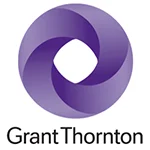 |
| (L to R) John Christiansen, Jared Levy & Bryan Locke co-authored this article. |
Activist shareholders used to target companies primarily when they were showing concerning losses, reducing dividends and making foolhardy financing decisions. In today's complex and dynamic sociopolitical and economic environment, however, shareholder activism has evolved into much more than identifying points of improvement and issues in a company's financial results. Delivering growth and profit remains paramount, but only part of a list of items for which boards and management teams are being held accountable.
At the same time, the expansion of the stakeholder economy is multiplying the strategic risks and challenges that companies face.
Management teams are being asked to explain how their political contributions and viewpoints align with their company's mission and values. They're increasingly expected to comment on topical social issues, such as what they're doing to reduce greenhouse gas emissions across their supply chains, make workplace conditions and wages more fair and equitable and transform the business for the future while delivering strong shareholder returns today.
| This article is featured in O'Dwyer's Aug. Financial PR/IR & Professional Services PR Magazine (view PDF version) |
The stakes are high: Public debates with activist investors can tie up resources, distract employees and divert management's attention from its strategic plan. Worse, they can hurt the company's reputation, impact stock price and drive volatility. To win, companies need to plan early and react quickly.
An expanded threat matrix
Environmental and Social considerations—commonly encapsulated under the broader "ESG" label—have dominated conversations among management teams, government officials, media and investors, both large and small. So far in 2022, shareholders have filed 172 environmental proposals at public companies' annual meetings, up 39 percent over 2021. Proposals regarding companies' political lobbying also increased in 2022, accounting for 26 percent of total ESG campaigns, compared with 23 percent in 2021.
ESG issues will continue to take center stage as proposed changes to SEC regulations will result in more shareholder proposals as well as contested annual meetings. Fueling this trend is the sharp increase in funds that claim to apply sustainable principles to their investment goals, which today have total assets of $35 trillion, according to data from Bloomberg Intelligence.
In the past, activists demanded disclosures for issues such as environmental impact and gender/racial pay gap. Today, these firms are asking for specific targets. Tomorrow, they'll be demanding accountability if those targets are not reached. Companies considered to be engaging in "green-washing" will likely take a hit to their reputation; companies need to be vigilant in setting ambitious but realistic targets and monitoring their progress.
In addition to the focus on ESG themes, traditional economic activism remains strong. First-time activists accounted for 37 percent of all campaigns launched in the first half of 2022. Both newcomers and established activists continue to critique companies' executive teams, compensation packages, strategy, operations and capital allocation, reinforcing the need for companies to be increasingly forward-thinking in their anticipation of activist demands.
Despite a challenging investing environment, the total number of campaigns launched in the 2022 proxy season is on pace to match recent years. Changes such as the SEC's mandated use of Universal Proxy cards in public solicitations beginning in September are expected to lead to a greater number of campaigns, particularly from new ESG activists, unions and ex-CEOs/Founders seeking to gain representation on a company's board. After the new rule goes into effect, shareholders will be able to launch campaigns at a fraction of the cost. Campaigns are expected to more frequently result in at least one or two dissident directors winning board seats, given shareholders' newfound ability to "mix and match" director candidates from both the company's slate and the dissidents'.
As such, management teams should continue to educate themselves on the current activism landscape, analyze key trends specific to their industry, evaluate their potential vulnerabilities and understand their shareholder composition and sentiment. While companies are most vulnerable when shareholders can submit proposals or nominate directors, the traditional proxy calendar has expanded, with activists making initial approaches well before the annual meeting season.
Building an action plan
Like any other threat to a company's reputation or performance, companies can actively prepare to address an activist threat.
Identify your team. Just as companies should have a crisis playbook on the shelf, they should also be prepared for public agitation from activist shareholders. After establishing an internal activism preparation team including key personnel across corporate functions and operating segments, engage outside advisors with specialized expertise in planning for and engaging with shareholder activists, potentially including a strategic communications consultant, law firm, investment bank, corporate governance specialist and proxy solicitor.
Maintain a shareholder base with regular touchpoints with top shareholders. Regularly solicit and assess feedback through a mix of normal course investor relations activities, including sell-side engagements, conferences, earnings calls and investor days. Also, make an effort to engage with the corporate governance teams at your passive index funds, whose votes often determine the outcome of contested director elections.
Undertake a vulnerability analysis to evaluate weaknesses and likely angles of attack. In addition to economic vulnerabilities, including performance, corporate strategy, M&A history and operations, consider structural vulnerabilities, including your corporate governance profile, board composition, shareholder base and bylaw provisions. Consider how an activist may use these vulnerabilities as angles of attack; take preemptive action where possible and prepare response messaging accordingly.
Develop a comprehensive preparedness response plan. Having an integrated communications strategy and approach, response sequence, key messages and rebuttals to potential lines of attack and a suite of contingency communications materials for each scenario is essential in responding to an activist attack. This plan should solicit input from key stakeholders within your company, including the corporate communications and IR teams, management team and members of a company's board.
Practice responses with the board and management team. Conduct regular tabletop exercises to stress test the response plan through simulation of likely scenarios, and make sure the plan remains current as the company's strategy, personnel and results evolve over time.
Today's activist strategies are becoming more sophisticated, increasingly leveraging media tactics to win the PR battle and influence proxy advisory firms and shareholders. Any listed company can be a target. The question isn't "if," It's "how" and "when"—and what measures you have in place to mitigate the threat.
***
John Christiansen, Bryan Locke and Jared Levy are Partners at FGS Global.


 Teneo is handling the initial public offering of CVC Capital Partners, one of Europe’s largest private equity firms with nearly $200B in assets under management.
Teneo is handling the initial public offering of CVC Capital Partners, one of Europe’s largest private equity firms with nearly $200B in assets under management. Brunswick Group represents Endeavor Group Holdings as it agrees to go private via its acquisition by Silver Lake technology investment firm, which is handled by Edelman Smithfield.
Brunswick Group represents Endeavor Group Holdings as it agrees to go private via its acquisition by Silver Lake technology investment firm, which is handled by Edelman Smithfield. Tod Donhauser, a nine-year veteran of Edelman, has joined H/Advisors Abernathy as managing director and head of its San Francisco office.
Tod Donhauser, a nine-year veteran of Edelman, has joined H/Advisors Abernathy as managing director and head of its San Francisco office. Intelligent Group Ltd, a Hong Kong-based financial PR firm, has priced its initial public offering of 1.9M shares at $4, which is the low end of the $4 to $5 range.
Intelligent Group Ltd, a Hong Kong-based financial PR firm, has priced its initial public offering of 1.9M shares at $4, which is the low end of the $4 to $5 range. Kekst CNC represents Grant Thornton as it sells a majority stake in its US arm to New Mountain Capital, which relies on Goldin Solutions, in what is billed as the largest PE investment in the accounting and advisory sector.
Kekst CNC represents Grant Thornton as it sells a majority stake in its US arm to New Mountain Capital, which relies on Goldin Solutions, in what is billed as the largest PE investment in the accounting and advisory sector.


 Have a comment? Send it to
Have a comment? Send it to 
No comments have been submitted for this story yet.